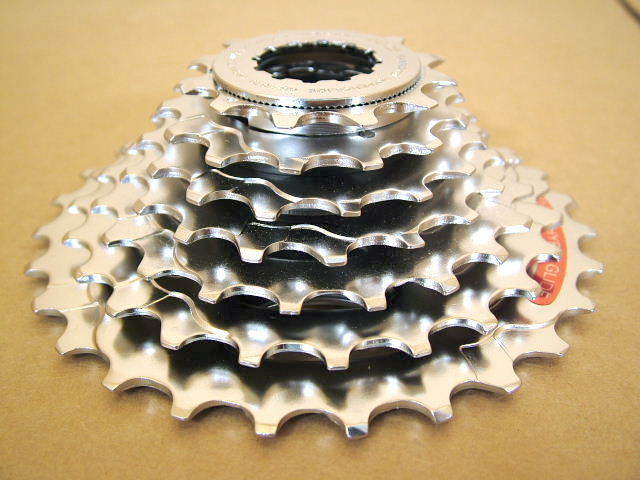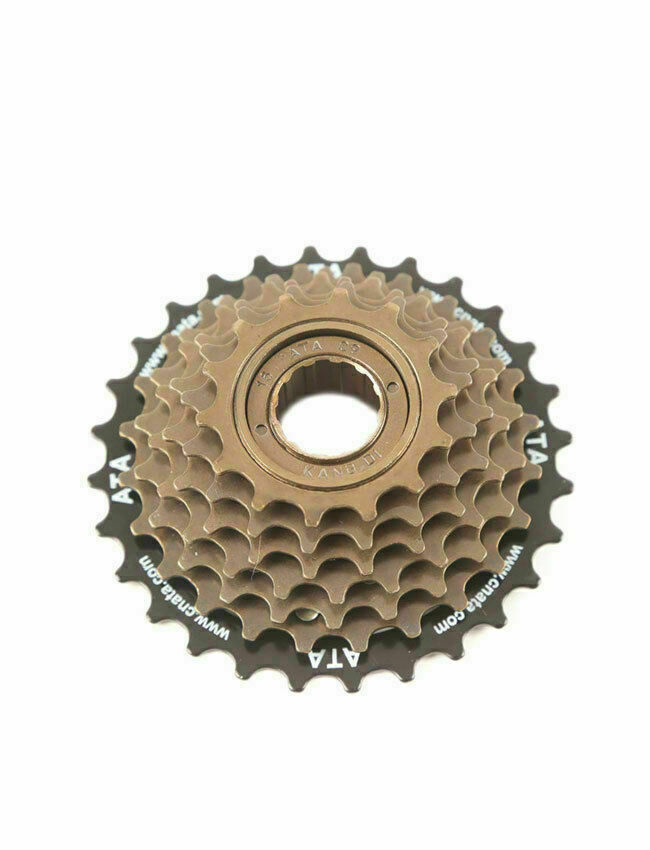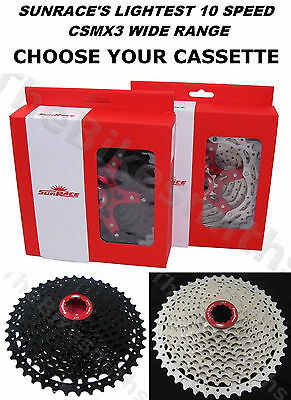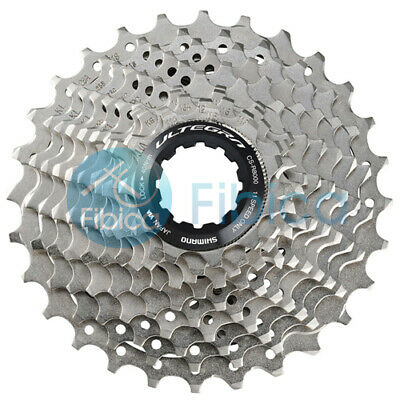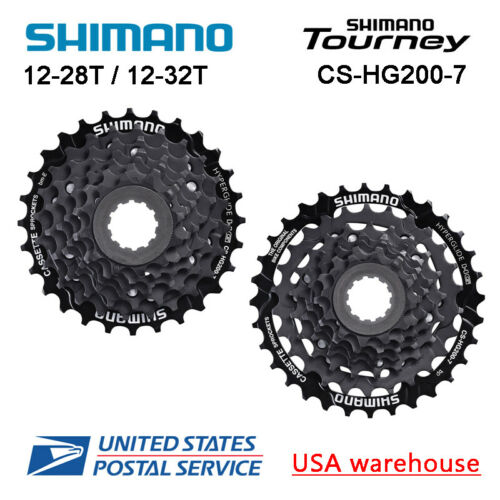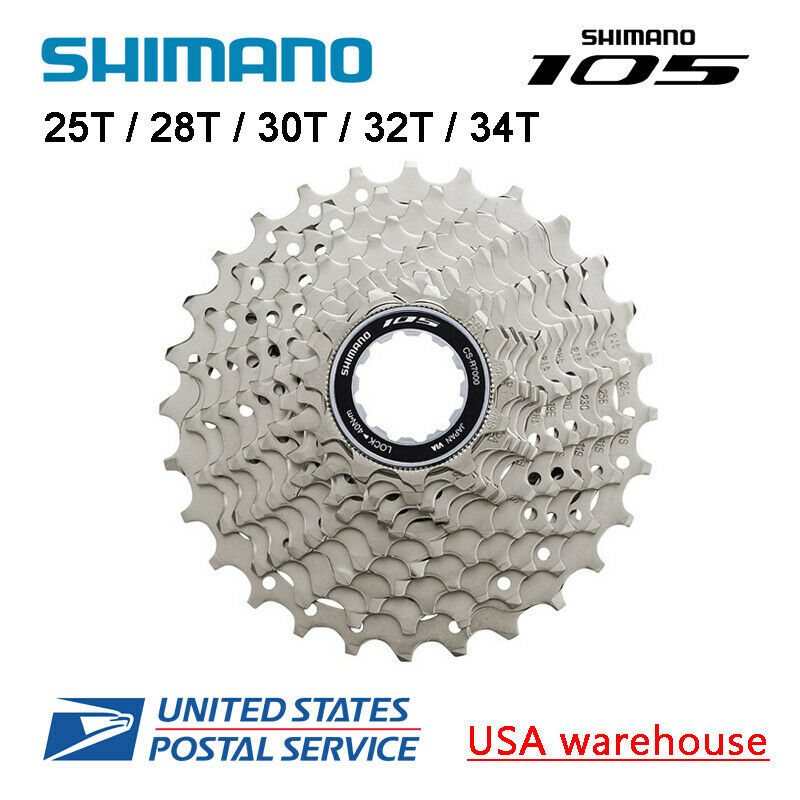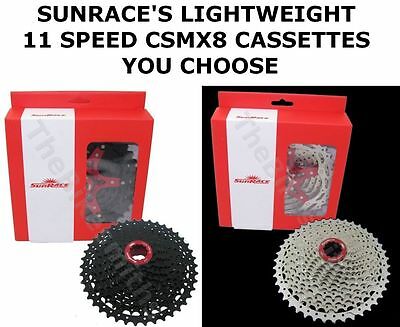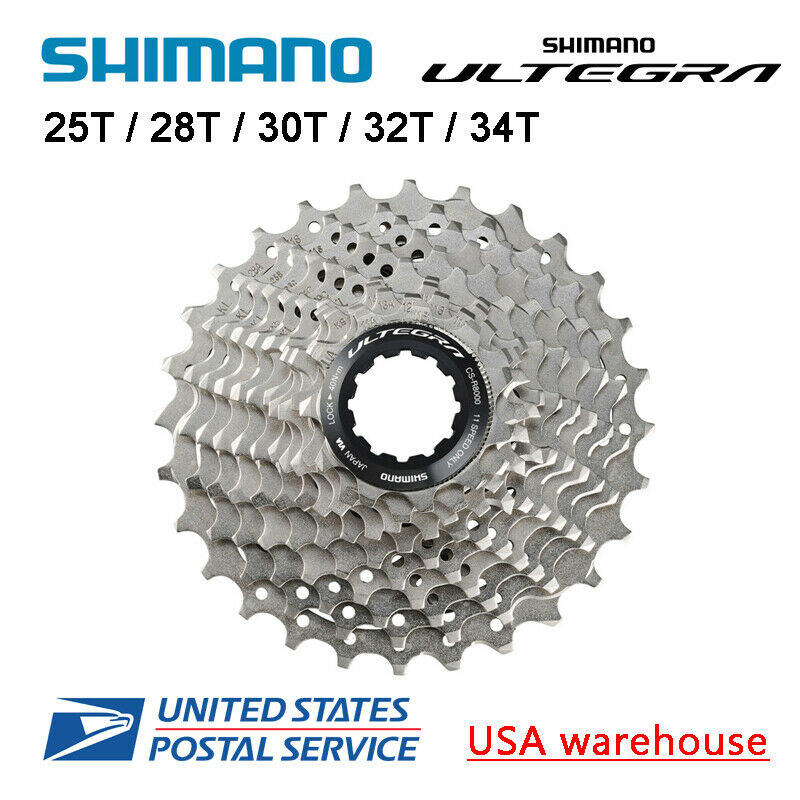-40%
New-old-stock Shimano Hyperglide (HG70) Kassette... 7-Gang/12x28
€ 66.34
- Description
- Size Guide
Description
New-Old-Stock Shimano HyperGlide (HG70) Cassette...7-speed/12x28Thank you for your interest in this item and please visit our store for other offerings. We have very reasonable shipping terms and combine orders to save money (for customers) on shipping costs. We also maintain customer friendly return/refund/exchange policies.
Product Description:
This offering is for a new-old-stock Shimano HyperGlide (HG70) model cassette with 7-speed 12-14-16-18-21-24-28 gearing. These HG70 cassettes coming out of Japan are very good quality and the equivalent of what Shimano intended for use on some of their Deore and 105 drivetrains (when the 7-speed drivetrain was in production...in the 90's). Although, if the intended application for this cassette is a road bike with a relatively standard (short-caged) rear derailleur, then please be mindful of drivetrain capacity limits.
Many Shimano short-caged rear derailleurs are catalog rated to accept rear sprockets that range from 12T to 28T (and some only to 26T) and with total capacity limited to around 28T (with the latter defined as the total difference between the front chainrings and the rear sprockets combined). As discussed in more detail below, these catalog specifications may be exceeded when proper shifting techniques are practiced to achieve preferred gear combinations (to maintain a relatively straight chainline), but we would still not exceed catalog specifications by significant amounts. From our own personal experiences, we've generally not had a problem shifting into a 28T tall sprocket with a rear derailleur that is catalog rated for a 26T max sprocket, while also having a total capacity that exceeds catalog specifications by a few teeth as well (as one example). Others may be able to achieve higher capacity levels relative to catalog specifications, but we only want to comment on our own experiences (to error on the side of being conservative). Additionally, when considering mountain bike drivetrains (or the equivalent) with long-cage rear derailleurs...these drivetrains will probably not experience the same capacity issues, because they are generally designed to accept taller sprockets and wider gear ranges.
The rear hub spacing for these cassettes, because they are of the 7-speed variety, is most likely 126 mm for a road bike, or 130 mm if used with a spacer. As for mountain bikes, and focusing on the early 90's for a moment, it appears that Shimano made two versions of the 7-speed freehub for it's Deore (XT, DX and LX) groupsets...one with 130 mm spacing and one with 135 mm spacing. It appears that both were designed for a 7-speed cassette, such as this one, but the locknut-to-locknut freehub dimensions were different...probably to accomodate all mountain bike frame designs with different rear spacing at the time. We do not see as much of this now, as it appears Shimano has spec'd. most of it's newer mountain bike rear freehubs at 135 mm spacing, but that is probably because most of these newer Shimano hubs have to accomodate 8/9/10 speed cassettes...so the extra spacing is needed. Having said all of this, we also measured the "stack height" (for lack of a better term) of this cassette and noted it to be about 34 mm (using our digital calipers). We thought this additional measurement would help ensure compatibility, should you want to measure the width of the intended splined freehub body and compare it to our measurement.
In terms of condition, most of these Shimano cassettes were bulk-packed...so no original retail packaging here...but they are all still new and unused (never having a chain wrapped around any of the sprockets).
Note regarding Shimano specifications (drivetrain capacity limits)...
We realize catalog specifications concerning drivetrain capacities tend to be conservative. As a result, they may generally be exceeded with slightly taller rear sprockets and total gear differences that exceed recommended limits...as long as proper shifting techniques are practiced to achieve preferred gear combinations. Manufacturer specifications generally consider worst case gear combinations when listing maximum drivetrain capacities, so as long as these combinations are avoided, riders are generally able to exceed catalog specified capacity limits. We realize most individuals scanning this listing are already well aware of proper shifting techniques that achieve preferred gear combinations, so we'll limit the discussion to the most basic of premises...and that is to maintain a chainline that is as straight as possible when making gear selections. For example, there should never be a need for a gear combination that includes the smallest chainring in the front and the smallest sprocket in the rear...or alternatively...the largest chainring on the front and the largest sprocket in the rear. These are the most extreme gear combinations that put undue stress on a drivetrain. As a result, avoiding these extreme gear combinations (as well as other gear combinations that approach these extreme examples), should allow each rider to squeeze a little more capacity out of a drivetrain.
Terms and Conditions:
You may visit our store by clicking on this
"Store Home Page"
link and please note the product categories on the left side of our
"Store Home Page"
.
We have also moved our
"Terms and Conditions"
to a separate page within our Ebay store. You may navigate to this page by clicking on the link on the left side of our
"Store Home Page"
(below the product categories) or you may click on one of our
"Terms and Conditions"
direct links herein.
Note to international customers regarding shipping...
We apologize to those that feel some of our international shipping charges are too high. We only charge actual shipping rates, but once an order exceeds a certain amount, we hesitate to use the least expensive US Postal Services First Class International service. We feel this way, because this service is not trackable or insurable...so more risk of loss. We prefer the US Postal Services Priority Mail International service for more expensive orders, because this service is trackable at USPS.com and insurable...so less risk of loss. Unfortunately, this service is more expensive, especially for smaller/lighter packages, relative to the First Class International service. We are sorry about these higher shipping costs, but hopefully our notes help to explain why this is the case.
Note to international customers regarding customs...
We also apologize to those that feel their country import taxes, duties and brokerage fees are excessive. As a small US business, we are required by customs' laws to declare each order as a retail sale. Additionally, the declared order value must be equal to total store purchases and/or winning auction bids (less any shipping costs, as these are not considered in the declared value). As a result, each customer will be responsible for paying his/her own country taxes, duties and brokerage fees, which will be collected upon delivery. Again, we apologize for these additional costs, but we cannot afford the penalties and fines that come with breaking customs' laws...so we have to strictly abide by them.
